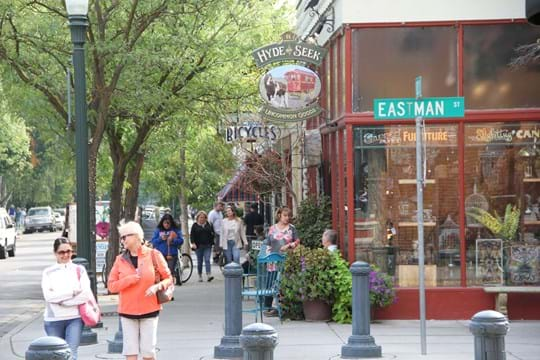The Neighborhood Data Almanac provides data snapshots about residents, households, and the built and natural environments for the geographic boundaries of each of Boise’s registered neighborhood associations. All of the data provided in the almanac serve as a touch-point for any individual interested in better understanding the general composition of each neighborhood and, by extension, helps the city and residents better address the needs of each neighborhood.

Overview
The City of Boise currently has:
- 34 registered neighborhood associations
- 247,475 people living within a neighborhood association
- 80% of Boise's acreage is within a neighborhood association
Neighborhood Data Sets
The Neighborhood Data Almanac includes a profile for each of the 36 neighborhoods that details neighborhood-specific data points across six major categories: demographics, housing, transportation, natural and built environments, community assets, and Energize investment and planning. An array of data are further detailed within each of these six categories, which are displayed below:
Data about/covering area population, ages, educational backgrounds, and household sizes and incomes.
Data about owner-occupied housing, rental housing, and vacant units compared to citywide statistics.
Data about automobiles per household and commute trips.
Data about a neighborhood’s natural and physical characteristics and conditions.
Data about community spaces and public amenities like bus routes, bike lanes and parks.
Data about the city’s Energize investments, neighborhood plans, and activity centers identified in Blueprint Boise.
The selected data points included in the almanac are those commonly requested by neighborhood members, used frequently in the neighborhood planning process, and accessible using Esri Business Analyst or City of Boise or external agencies databases.
How to Use the Almanac
Anyone can use the data in the almanac to better understand the composition of each neighborhood. Neighborhood data are critical for understanding local housing and demographic trends, identifying community resources and needs, and informing policy conversations.
Interpreting and understanding the neighborhood-specific data can be an important first step in making sense of neighborhood needs and developing plans to address those needs. The city encourages neighborhood leaders, neighbors, and community members to use the data contained in the almanac to identify assets, to understand needs, and to collaborate with neighborhood members and city staff to address items of concern.
Planning Areas
Blueprint Boise, the city’s comprehensive plan, divides the City of Boise’s Area of City Impact (AOCI) into 11 planning areas. The division of the city into planning areas provides a localized lens to understand and interpret needs and policies of the comprehensive plan across the city. Each of the 34 neighborhoods are further sorted with respect to their planning area, as seen below. You can download and view the information by clicking on the link that corresponds to the planning area for whichever neighborhood association(s) you are interested in viewing.
Unsure which neighborhood you live in? See maps of all Neighborhood Associations on Energize.
Send a Message to Planning
Thank you for your interest in the Planning division. Please fill out the form below and a representative will be in touch with you. If you are inquiring about a specific project, please include the record number or project address.